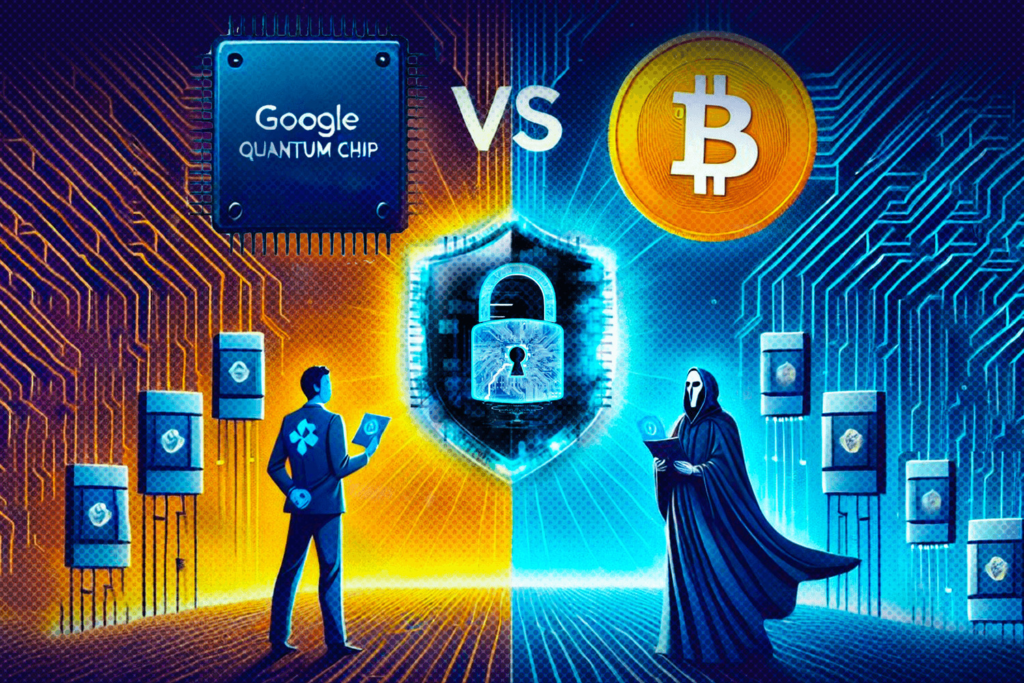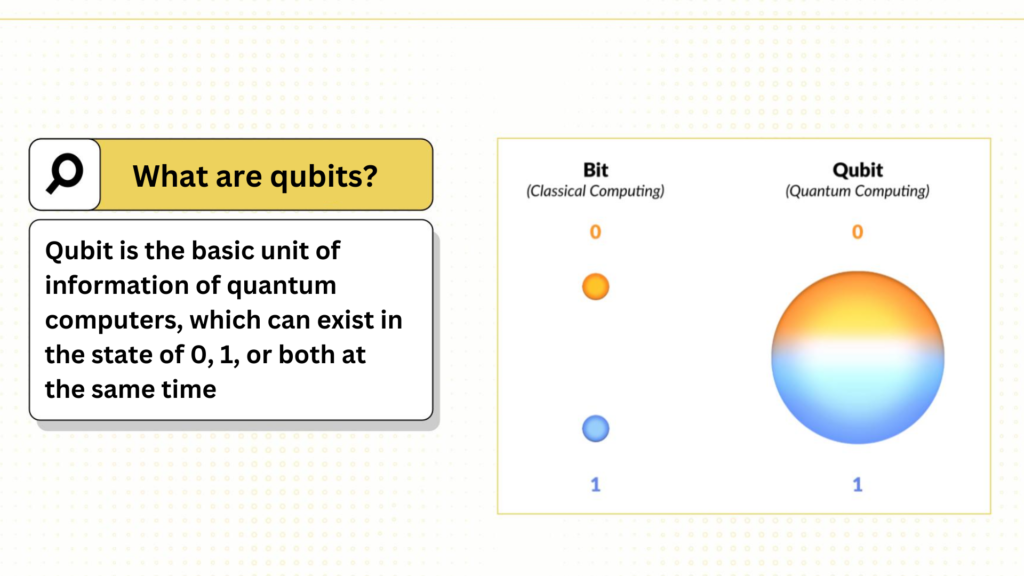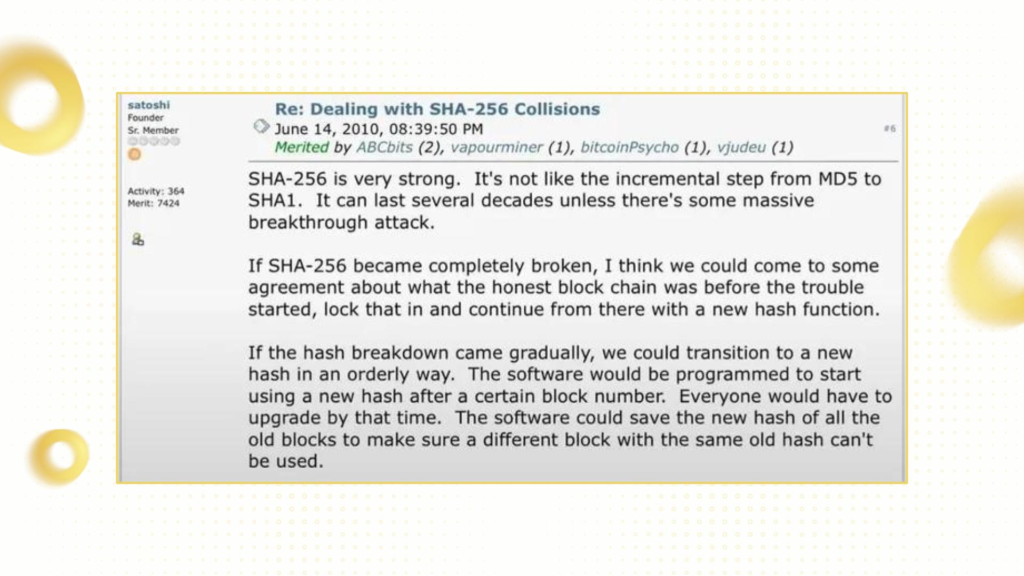The emergence of the Willow quantum chip is threatening Bitcoin’s “inviolability”. Can the network withstand the power of quantum computers?

Google’s Chip Solves Problem: 5 Minutes vs. 10 Septillion Years
Google recently introduced its latest quantum chip, called Willow, with groundbreaking performance. Boasting 105 qubits, the chip can perform complex calculations in just 5 minutes. In comparison, a modern supercomputer would need an estimated 10 septillion years to complete the same task

The Willow chip is also capable of real-time error correction, allowing it to maintain stability and accuracy even as the system scales.
“Typically, the more qubits you use, the more errors creep in and the system loses its quantum properties,” Hartmut Neven, founder of Google Quantum AI, wrote in a blog post.
Willow can reduce errors “exponentially” as the number of qubits is scaled up, Google said. This “solves a key challenge in quantum error correction that the field has been pursuing for nearly 30 years.”
This new type of chip will also effectively address many issues such as researching new drugs, forecasting weather, and optimizing manufacturing and financial processes. However, the crypto community is most concerned about the Willow chip’s ability to “crack” the security of leading blockchains, especially Bitcoin.
For now, Bitcoin remains secure
Bitcoin uses a security mechanism based on the SHA-256 hash algorithm and ECDSA digital signatures to authenticate and protect transactions. Theoretically, quantum computers, with the help of Grover’s and Shor’s algorithms, could break these mechanisms.
Specifically, Grover’s algorithm speeds up the search for the original value of a hash function through a brute-force method. This algorithm would reduce the security of SHA-256 by half.
Shor’s algorithm can overcome the ECC encryption system, the foundation of ECDSA digital signatures, allowing attackers to find private keys by working backward from public keys. With the private key, attackers can sign fraudulent transactions or steal assets from a victim’s Bitcoin wallet.

However, this threat is only theoretical; all current quantum computers, including Willow, cannot overcome Bitcoin’s security mechanisms. Multiple studies (such as those by Webber and the University of Sussex) indicate that a quantum computer would need 13 million qubits to achieve this, while Google’s Willow chip only has 105 qubits.
Therefore, quantum technology still has a long way to go before it can harm Bitcoin.
Read more: Bitcoin and the crypto market benefit from macroeconomic factors
But perhaps Bitcoin won’t be safe forever
While advances like Google’s Willow chip cannot yet break SHA-256 or disrupt the Bitcoin network, one day quantum technology may be powerful enough to overcome most human encryption systems.
According to the Director of Google’s Quantum Artificial Intelligence division, within the next 10 years, quantum computers could reach 4 million qubits and decrypt RSA – an encryption system widely used in financial services, secure messaging, and military applications.
If RSA is decrypted by quantum computers, hundreds of trillions of dollars belonging to governments and banks will become easy targets for hackers. Along with that, many military secrets and national security issues will also be exposed.
Due to the extremely rapid development of technology, it may not be long before the SHA-256 algorithm is also broken. This scenario requires careful preparation from cryptography experts in both the traditional and blockchain worlds.
The National Institute of Standards and Technology (NIST) is one of the leading organizations in developing encryption algorithms for the coming quantum era. This organization is seeking to standardize a cryptographic system based on lattice-based cryptography and hash-based signatures that can resist Grover’s and Shor’s algorithms.
Once these algorithms are officially released, developers can integrate them into Bitcoin, the blockchain industry in general, and many other important fields.
Quantum Attacks & Actions by Vitalik and Satoshi
In addition to traditional organizations, the blockchain industry has also been preparing to deal with the risks from quantum computers. Vitalik Buterin (co-founder of Ethereum) has proposed integrating STARK proofs and the Lamport signature mechanism using a chain of consecutive hash values into Ethereum to prevent quantum attacks on the network.

As for Bitcoin, since 2010, the anonymous developer Satoshi Nakamoto has anticipated the potential downfall of SHA-256. He asserted that SHA-256 is a very strong algorithm, capable of protecting Bitcoin for decades to come. However, this capability is not permanent, as SHA-256 will eventually be “cracked.”
If that day comes (a possibility with the advent of quantum computers), he proposed that: Before being attacked, the Bitcoin community could agree to fork the Bitcoin network with a new hash function, and Bitcoin would be able to continue operating normally

